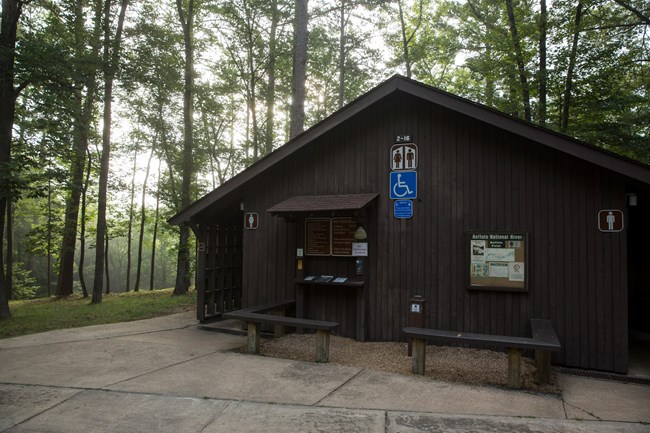Last updated: July 25, 2021
Article
Cycling Wastewater

NPS/D. Filipek
The average person produces just under 1 pound of poop per day. With approximately 1.5 million people visiting Buffalo National River each year, that’s a lot of human waste to manage! Unregulated human waste can directly leak into oceans, lakes, and rivers, so having a solid waste management plan is critical in minimizing human impact and keeping waterways healthy for both people and wildlife. Built-in restroom facilities are carefully placed in high-traffic areas like campgrounds, boat launches, and certain hiking trails. These restroom facilities vary in type, from flushable to waterless (vault) toilets.

NPS
Not all restrooms connect to a wastewater treatment plant within the park. Some are connected to septic systems, like at Steel Creek, where waste is collected by a licensed septic tank hauler and disposed of outside of the Buffalo National River watershed. Tyler Bend Campground's restroom and shower facilities have a different way of disposing waste. Waste goes through a process similar to the one used at Buffalo Point but gets discharged through a series of sprayer heads to a designated field. All processes are ADEQ approved.
Visitors from all over the world come to Buffalo National River for solitude, recreation, inspiration, and more. Waste management plays a critical role in preserving these qualities of the visitor experience while promoting ecological health and human safety. Click here to learn about Buffalo National River's water quality monitoring program.
Visitors from all over the world come to Buffalo National River for solitude, recreation, inspiration, and more. Waste management plays a critical role in preserving these qualities of the visitor experience while promoting ecological health and human safety. Click here to learn about Buffalo National River's water quality monitoring program.
